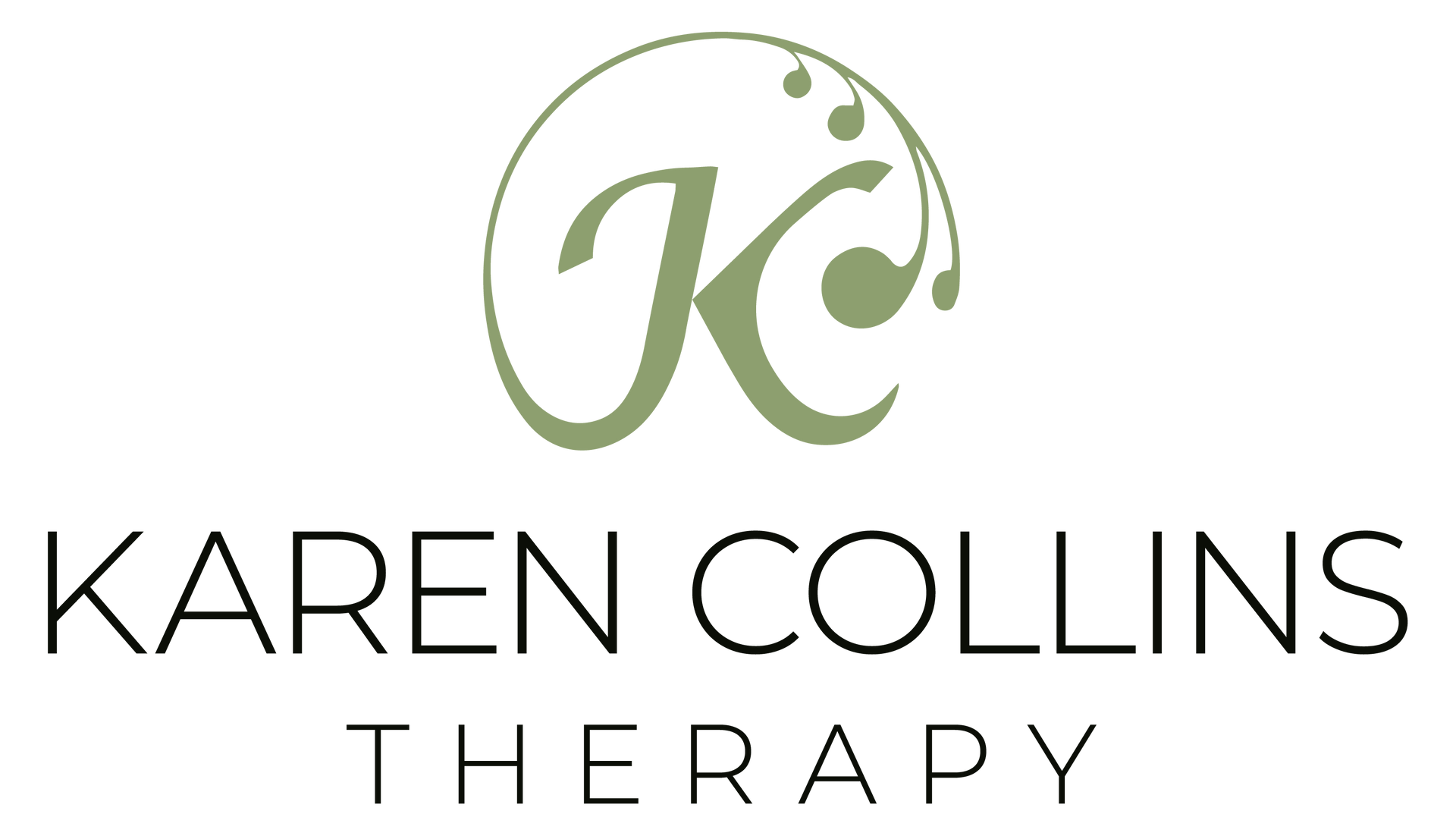Understanding Attachment Styles in Relationships: How Your Past Shapes Your Present Love | Karen Collins LMFT
If you've ever wondered why you react a certain way in relationships, why you might feel anxious when your partner seems distant, or why you pull away when things get too close, the answer often lies in your attachment style. These deeply ingrained patterns, formed in our earliest relationships, continue to shape how we connect with romantic partners throughout our lives.
As a licensed marriage and family therapist with extensive experience in attachment-informed approaches in Petaluma, I've seen firsthand how understanding attachment styles can transform relationships. When couples learn about their attachment patterns, they often experience that profound "aha" moment that explains years of relationship struggles and opens the door to lasting change.
What Are Attachment Styles and Where Do They Come From?
Attachment theory, developed by John Bowlby and Mary Ainsworth, explains how our earliest relationships with caregivers create internal "working models" of relationships that we carry into adulthood. These attachment styles represent the strategies we developed as children to get our emotional needs met and feel safe in relationships.
Your attachment style develops based on how consistently your caregivers responded to your needs, whether you felt safe and secure with your primary caregiver, the emotional availability of your early relationships, and how well your caregivers helped you regulate emotions and stress.
The remarkable thing about attachment styles is that they're not just theoretical concepts, they show up in very real, observable patterns in adult relationships. Understanding these patterns is the first step toward building healthier, more secure connections.
The Four Main Attachment Styles in Adult Relationships
Secure Attachment: The Foundation of Healthy Love
Approximately 50-60% of adults have a secure attachment style. In relationships, securely attached people feel comfortable with both intimacy and independence, communicate their needs directly and honestly, handle conflict constructively without becoming overwhelmed, trust their partners and assume positive intent, and support their partner's autonomy while maintaining connection.
These individuals usually had caregivers who were consistently responsive, emotionally available, and provided a secure base for exploration and comfort during distress.
Sarah feels comfortable telling her partner when she needs alone time, and she doesn't interpret his occasional bad mood as a threat to their relationship. When they disagree, she can discuss the issue without attacking or withdrawing.
Anxious Attachment: The Fear of Abandonment
About 15-20% of adults have an anxious attachment style. In relationships, anxiously attached people worry frequently about their partner's feelings and commitment, seek frequent reassurance and validation, may become preoccupied with relationship problems, feel more comfortable when very close to their partner, and sometimes sacrifice their own needs to maintain the relationship.
These patterns often develop from caregivers who were inconsistently responsive - sometimes attentive and loving, other times preoccupied or unavailable.
Michael checks his phone constantly when his girlfriend doesn't respond to texts immediately. He interprets her need for a quiet evening as a sign she's losing interest, leading to frequent conversations about the relationship's status.
Avoidant Attachment: The Need for Independence
Approximately 20-25% of adults have an avoidant attachment style. In relationships, avoidantly attached people value independence and self-reliance highly, may feel uncomfortable with too much closeness or emotional expression, tend to minimize the importance of relationships even though they want them, often struggle to express emotions or ask for support, and may withdraw when partners seek more intimacy.
This usually stems from caregivers who were emotionally unavailable, rejecting of emotional needs, or who emphasized independence over connection.
Lisa feels suffocated when her boyfriend wants to spend multiple evenings together each week. She values their relationship but needs significant alone time and struggles to talk about feelings, often changing the subject when conversations get emotional.
Disorganized Attachment: The Push-Pull Dynamic
About 5-10% of adults have a disorganized attachment style. These individuals want close relationships but also fear them, may exhibit inconsistent relationship behaviors, struggle with emotional regulation during conflict, and often experienced trauma or very inconsistent caregiving.
James desperately wants a committed relationship, but panics when his girlfriend talks about moving in together. He alternates between being very affectionate and pulling away, leaving both partners confused and exhausted.
How Attachment Styles Show Up in Your Relationship
Communication Patterns
Your attachment style significantly influences how you communicate in relationships:
Secure: "I felt hurt when you canceled our plans last minute. Can we talk about how to handle schedule changes better?"
Anxious: "You always cancel on me! Do you even want to be with me? I need to know you're not going to leave me!"
Avoidant: Says nothing about canceled plans, or minimizes feelings: "It's fine, I had other things to do anyway."
Disorganized: "I can't believe you canceled! Actually, it's probably better this way. Wait, are we okay? Never mind, forget I said anything."
Conflict Resolution Styles
Secure attachment leads to approaching conflict as a problem to solve together. These individuals can stay emotionally regulated during disagreements and work toward mutually satisfactory solutions.
Anxious attachment often results in escalating conflicts due to fears of abandonment. The underlying message is often "Please don't leave me" rather than addressing the specific issue.
Avoidant attachment typically leads to minimizing conflicts or withdrawing altogether. The person may shut down emotionally or physically leave during disagreements.
Disorganized attachment can result in unpredictable responses to conflict, sometimes escalating dramatically and other times withdrawing completely.
The Dance Between Different Attachment Styles
In relationships, attachment styles interact in predictable patterns that can either complement or clash:
Anxious-Avoidant Dynamic (The Most Common)
This pairing often creates a "pursuit-withdrawal" cycle. The anxiously attached partner seeks more connection and reassurance, while the avoidantly attached partner feels overwhelmed and withdraws. The withdrawal triggers more pursuit, creating an escalating cycle where both partners end up frustrated and feel misunderstood.
Maria (anxious) asks David (avoidant) to talk about their relationship. David feels pressured and suggests they "just enjoy their time together." Maria interprets this as rejection and becomes more insistent on talking. David withdraws further, confirming Maria's fears and intensifying her pursuit.
Secure with Insecure Attachment
When one partner has secure attachment, they often provide a stabilizing influence by helping anxious partners feel more secure through consistent responsiveness, encouraging avoidant partners to gradually become more open, providing a model for healthy relationship behaviors, and offering stability during relationship stress.
How Solution-Focused Approaches Help with Attachment Patterns
In my practice, I integrate solution-focused techniques with attachment understanding to help couples build on their existing strengths while addressing attachment-related challenges. Rather than focusing solely on problems, we explore times when couples successfully navigate attachment triggers or demonstrate secure behaviors.
Identifying What's Already Working
Every couple has moments when they connect well, communicate effectively, or support each other through difficulties. By identifying these exceptions, we can understand what conditions allow for more secure interactions and how to create more of these positive experiences.
Setting Realistic Goals
Instead of trying to completely change attachment styles overnight, we focus on small, achievable steps that gradually build security. This might involve one partner committing to pause before withdrawing, or another practicing asking for support in specific ways.
Building on Strengths
Every individual and couple has relationship strengths, regardless of their attachment styles. Solution-focused work helps identify and amplify these strengths while gradually addressing areas of difficulty.
Practical Steps for Building More Security
Understanding your attachment style is just the beginning. Here are practical ways to develop more secure patterns:
For Anxious Attachment
Practice self-soothing techniques to manage anxiety without immediately seeking reassurance. Develop interests and relationships outside your romantic partnership. Challenge catastrophic thoughts about relationship threats. Communicate needs directly rather than hoping your partner will guess.
For Avoidant Attachment
Practice identifying and expressing emotions in small, manageable steps. Gradually increase emotional sharing with trusted partners. Challenge beliefs about independence versus connection. Notice and appreciate the benefits of emotional intimacy.
For All Attachment Styles
Learn to recognize when your attachment system is activated - sudden changes in emotional intensity, physical reactions like tension or racing heart, thoughts becoming all-or-nothing, or urges to seek reassurance, withdraw, or control.
The Role of Professional Support
While understanding attachment styles can be incredibly helpful, some attachment-related challenges benefit from professional guidance. Consider attachment-informed therapy if you recognize problematic patterns but struggle to change them on your own, past experiences significantly impact your current relationships, you and your partner seem stuck in repetitive cycles despite good intentions, or you want to develop more secure patterns but need support.
In my work with couples in Petaluma, I've witnessed profound transformations when partners understand their attachment dynamics. This work involves creating awareness of each partner's attachment style and how it shows up in their relationship, understanding the cycle that most relationship conflicts involve attachment dynamics, developing new patterns through experimenting with different responses, and building security together by learning to be a "secure base" for each other.
Communication Strategies for Different Attachment Pairings
Understanding your partner's attachment style can help you communicate more effectively:
When Your Partner Has Anxious Attachment
Provide regular reassurance about your commitment. Be consistent and predictable in your responses. Address their concerns directly rather than dismissing them. Understand that their need for connection isn't clingy - it's their way of feeling secure.
When Your Partner Has Avoidant Attachment
Give them space to process emotions before discussing feelings. Appreciate their independence while gently encouraging connection. Don't take their need for alone time personally. Approach emotional conversations gradually and without pressure.
When Your Partner Has Secure Attachment
Take advantage of their emotional stability to practice new communication skills. Let them model healthy conflict resolution for you. Be open to their feedback and support. Use their consistency to build your own security over time.
Building Emotional Safety in Your Relationship
Regardless of your attachment styles, creating emotional safety is essential for relationship growth:
Listen without immediately trying to fix or defend. Sometimes your partner just needs to feel heard and understood before moving to problem-solving.
Validate each other's feelings even when you don't agree. You can acknowledge your partner's emotions without agreeing with their interpretation of events.
Create predictable rituals for connection. Regular check-ins, date nights, or simple daily routines help build security over time.
Practice repair after conflicts. Learn to come back together after disagreements with acknowledgment, understanding, and reconnection.
The Hope in Understanding Attachment
Learning about attachment styles isn't about excusing problematic behaviors or feeling doomed by your past. Instead, it offers a compassionate understanding of why relationships can feel challenging and provides a roadmap for creating the secure, loving partnerships we all deserve.
Your attachment style represents the best strategies you could develop as a child to feel safe and get your needs met. As an adult, you have the opportunity to expand your relationship toolkit and create new patterns that serve your current relationships better.
Whether you're working on your own attachment patterns or learning to understand and support a partner with different attachment needs, remember that change is possible. With patience, understanding, and often professional support, anyone can move toward more secure and satisfying relationships.
Frequently Asked Questions About Attachment Styles
Can attachment styles change over time? Yes, attachment styles can evolve throughout life, particularly through corrective relationship experiences, therapy, and conscious personal work. This process is called "earned security."
What if my partner and I have incompatible attachment styles? No attachment style combination is inherently incompatible. With understanding and effort, any pairing can learn to work with their differences and even help each other develop more security.
How do I know what my attachment style is? Pay attention to your patterns in close relationships: How do you respond to conflict? What do you do when you feel threatened in a relationship? How comfortable are you with intimacy and independence? Professional assessment can also provide clarity.
How long does it take to develop more secure attachment? This varies greatly depending on individual factors, relationship context, and whether professional support is involved. Some people notice changes within months, while deeper patterns may take longer to shift.
Taking the Next Step
Understanding attachment styles is just the beginning of creating healthier, more fulfilling relationships. If you recognize yourself and your relationship patterns in this discussion, you're already taking an important step toward positive change.
In my practice in Petaluma, I help couples understand their attachment dynamics and develop practical skills for building more secure connections. Using approaches that integrate attachment understanding with solution-focused techniques, we work together to identify your strengths, understand your patterns, and create lasting change.
Remember that awareness alone isn't always enough to change deeply ingrained patterns. Many couples benefit from working with a therapist experienced in attachment-informed approaches to help translate understanding into lasting behavioral change.
Your attachment style isn't your destiny, it's simply information about how you learned to navigate relationships early in life. With conscious effort, professional support when needed, and patience with yourself and your partner, you can build the secure, loving relationship you desire.
Ready to explore how attachment dynamics might be affecting your relationship? I'm here to help you understand your patterns and build the connected, secure partnership you both deserve. Contact me to learn more about how attachment-informed couples therapy can transform your relationship.
Karen Collins, LMFT, provides couples therapy and individual counseling in Petaluma, California. With over 18 years of experience, she helps couples improve communication, rebuild connection, and create lasting positive change using attachment-informed and solution-focused approaches.












